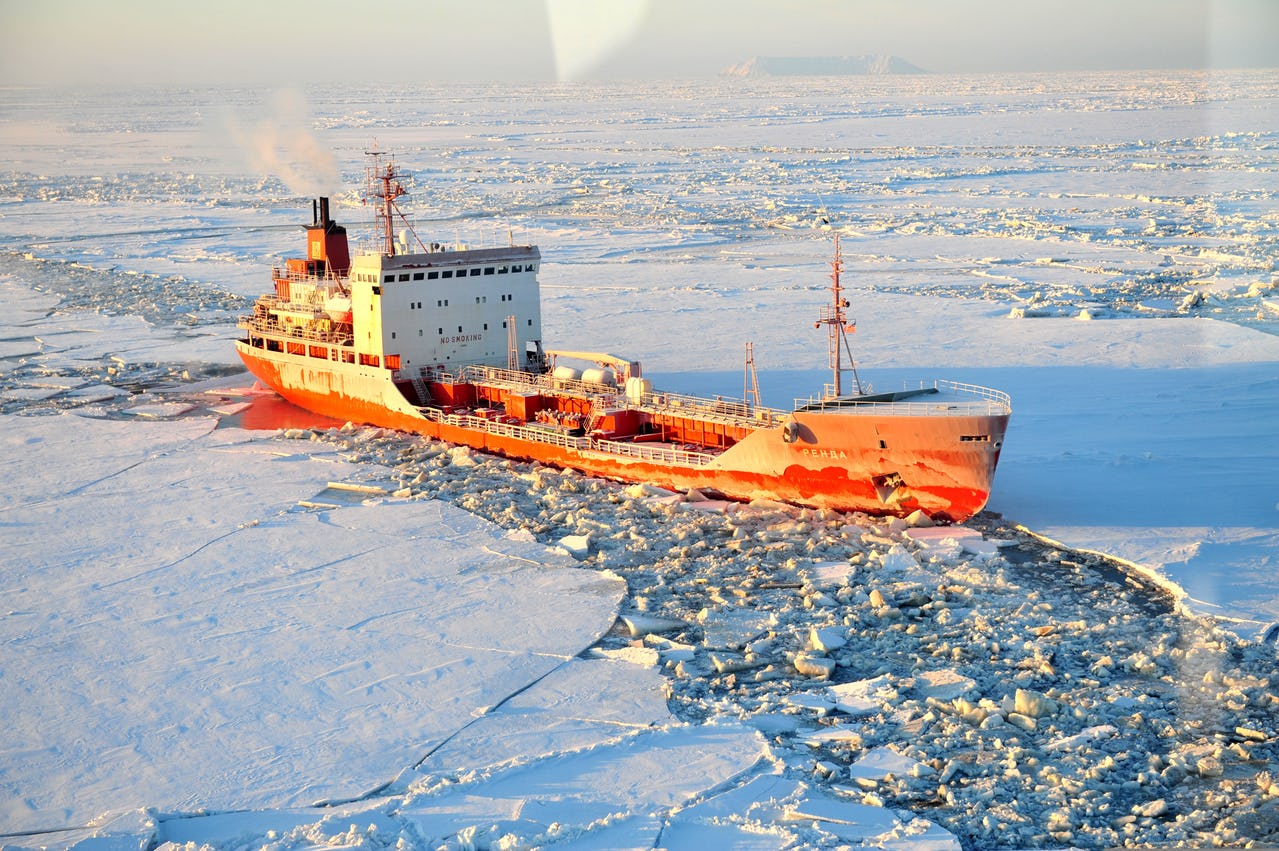Lessons From the Russian Fuel Tanker Resupply of Nome, Alaska

The Russian tanker Renda transits toward the port of Nome, Alaska, Jan. 13, 2012. Renda was assisted by the U.S. Coast Guard cutter Healy (WAGB 20) since the vessels left Dutch Harbor, Alaska, to deliver fuel to the city of Nome, which was iced in by winter storms. Photo: Charly Hengen
Anyone following Alaskan news in the past few weeks has undoubtedly heard about the saga of the Russian fuel tanker Renda and its journey to deliver fuel to ice-bound Nome. For those who are not up to date on the story, it began back in November when a massive storm prevented Nome from receiving its last barge delivery of home heating fuel, diesel and gasoline for the winter. By the time the weather calmed down, Nome was already iced-in and it was confirmed that there would be no final fall delivery. At that time, it looked certain that the community would run out of fuel in the spring.
The only proven method to deliver fuel to Western Alaska in the winter is with aircraft hauling the fuel one airplane load at a time, consuming a vast amount of time and money. In response to the impending crisis, Sitnasuak Native Corporation, the native village corporation of Nome, was able to negotiate a deal with Vitus Marine LLC, an Alaskan-based shipping company, to secure the double hulled Russian tanker Renda to pick up and deliver the fuel. This will be the first-ever winter fuel delivery from the water in Western Alaska. The tanker will be accompanied by a U.S. Coast Guard’s icebreaker, the Healy.
After traveling around 250 miles a day from a diesel fuel pickup in South Korea, then stopping in Dutch Harbor, Alaska to collect gasoline, the Renda is now on its way to Nome with the cutter Healy. Although the fuel delivery mission is not yet complete, there are already several lessons to take away from this incident about the realities of the Arctic environment, the necessity for advanced Arctic shipping capabilities, and the importance of multi-level cooperation.
First, the storm in November that prevented a routine barge delivery to Nome serves as a reminder that the Arctic environment continues to be not only harsh, but also extremely volatile. The Arctic remains a place where weather patterns can have a severe impact on commercial activities and ultimately the fate of remote communities, and where there may not always be the technological capability to overcome these hardships. Even if adequate solutions are found to manage the consequences of unpredictable weather, as in this case, they are by no means straightforward or easy. The path through the Bering Sea to Nome will be dictated by day-to-day decision-making based on weather patterns and ice conditions, either of which can change on a dime and complicate the mission. That’s not to mention that any ship operating in the region must have a contingency plan in case of a fuel spill in ice-covered waters – which, if it occurred, would likely involve a complex clean-up operation and potentially devastating impacts on the fragile Arctic ecosystem.
Another glaring lesson from this event, already commented on by Jason Evans and Alex DeMarban in the Alaska Dispatch and Mike Ahlers for CNN, is that it highlights the limitations of the current U.S. icebreaking capability. The U.S. Coastguard has three icebreakers, however the two Polar class icebreakers are currently out of commission. The third, the Healy, while a larger and more modern design, is without the full capabilities of the others and does not have the space required for carrying fuel deliveries. Furthermore, its draft is too deep to get within one mile of Nome’s shore. Although the cutter was coincidentally on hand and able to help accompany the Renda, its home port is in Seattle and not in Alaska. The Nome mission has lengthened the deployment of the U.S. Coast Guard crew aboard the Healy, and delayed scheduled repairs to the ship – possibly affecting its scheduled missions for next summer. In contrast to the limited U.S. fleet, Russia has twenty-five icebreakers, Finland and Sweden have seven each, and Canada has six.
Perhaps the most important lesson from this story, although subtle, is the successful cooperation that occurred between private and public entities, internationally, and intergovernmentally, that enabled the mission to go forward. It was largely the collaborative efforts of two private entities, Sitnasuak and Vitus Marine, to find a solution for the impending fuel shortage in Nome. They were able to collaborate across international borders in Russia, and then proceeded to get the U.S. government involved. Both the state government of Alaska and the federal government have a role in the mission through multiple departments including the Coast Guard, the National Oceanic and Atmospheric Administration, and the Alaska Department of Conservation. This event has highlighted that the Arctic region consists of a web of interconnected actors that often function on vastly different levels for diverse purposes, but nevertheless need to effectively collaborate when there is an urgent situation.
If the Renda reaches Nome and delivers the fuel successfully, as is planned by late Sunday or early Monday, it will be a cause for celebration. Not only is this delivery critical for the community of Nome, but it also marks an historic accomplishment of winter shipping in Alaska. However, it should also serve as a time of reflection on the lessons that can be taken away from the mission and a reminder of what factors need to be taken into consideration in the future as activities in the Arctic region intensify.